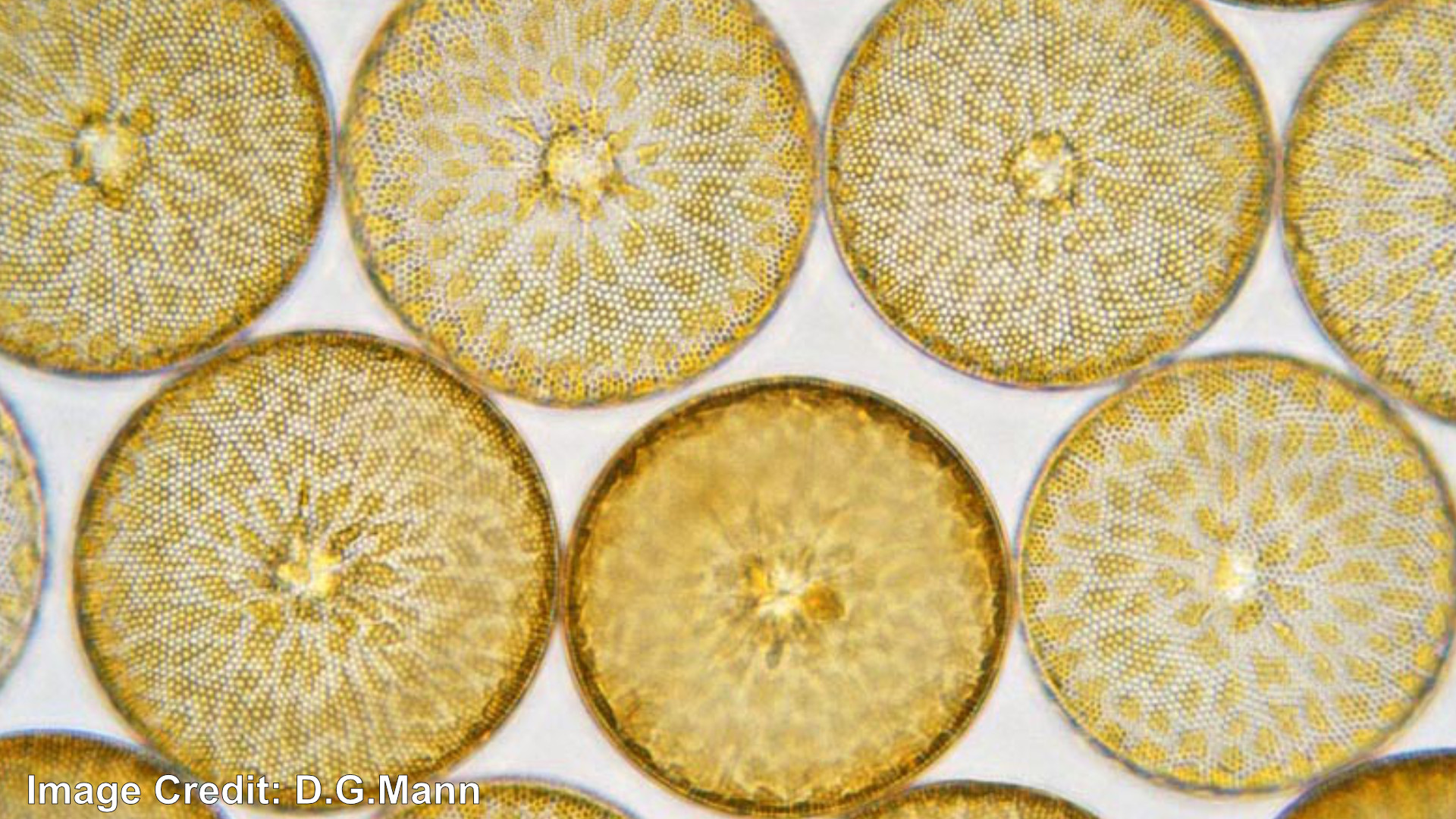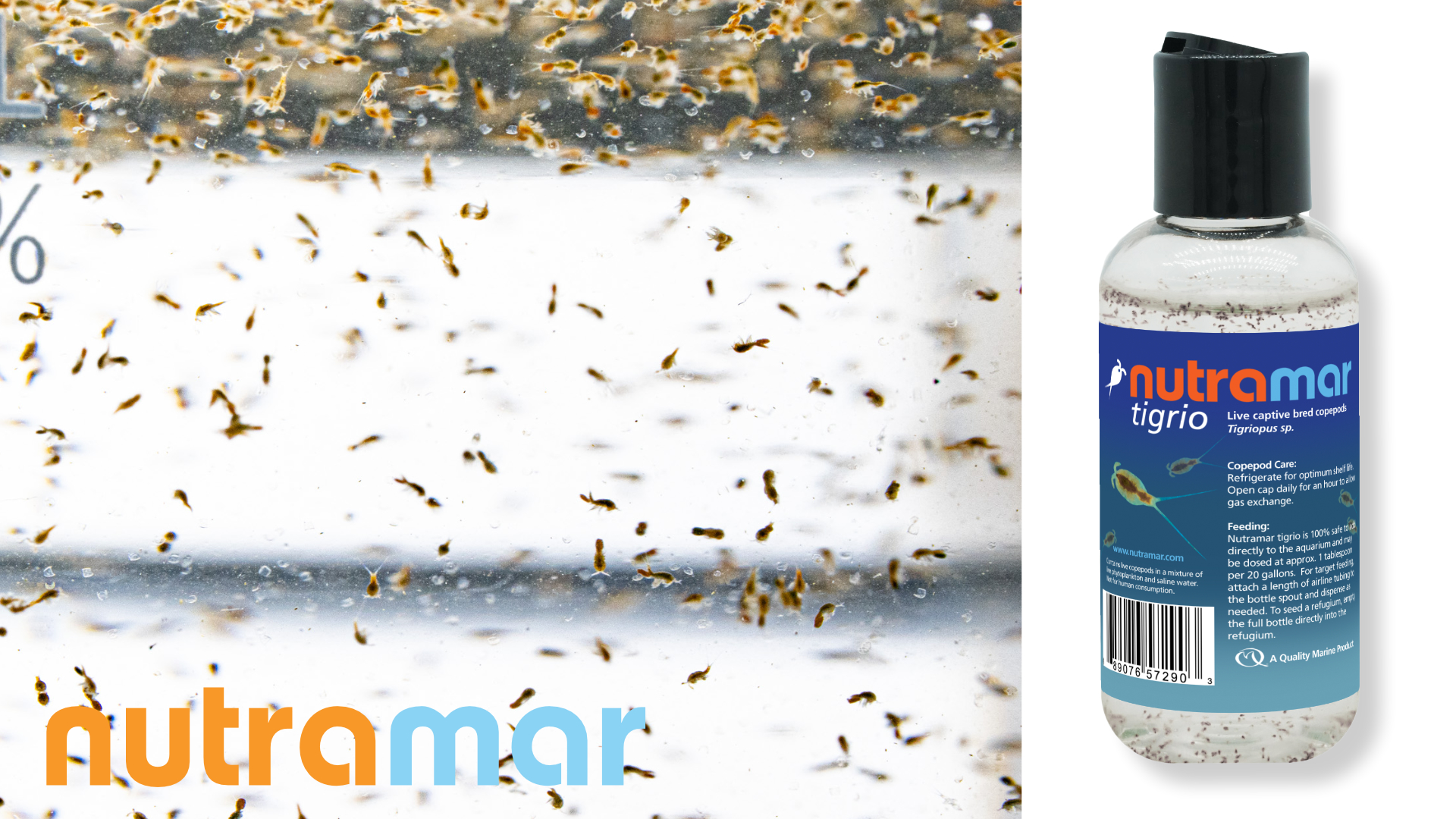Not So Dangerous Diatoms

Many early stage marine aquarium keepers have panic moments. If this is you, take heart. There have always been, and likely always will be, bumps in the road, setbacks and challenges on the way to amazing aquarium victory. Lots of these are predictable and easily dealt with. If you've been patient in setting up your aquarium, and followed our “First Timer” series pretty closely, you've set a good foundation for success.
A phrase commonly heard by LFS employees is “OH MY GOD THERE IS BROWN HAIR GROWING OVER EVERYTHING IN MY TANK!!!” Now, as in everything aquarium related, just calm down a bit. What you have going on is a diatom bloom. Nearly all marine aquariums will go through one, in the early stages of maturity. Your next question is “What exactly is a diatom bloom?”
Science time! Diatoms are usually photosynthetic (light dependent) algae that have been around since at least the Jurassic period. Diatoms have a body made of silicates, so they live in a glass house (more or less); under a microscope, many look like tiny glass snowflakes, others look like miniature glass feathers. It is estimated that diatoms and their photosynthetic activity are responsible for up to 50% of the oxygen on the planet! They can grow and settle densely enough to make substrate nearly completely composed of them, often called diatomaceous earth. DE, as it is called, is used as an incredibly effective filter media, as well as an ingredient in things like paint, cleaning products, gardening amendments and even dynamite!
We, as scientists, have no idea how many species of diatoms exist, though we suspect there are millions. A drop of water from a sample site may have dozens or even hundreds of different ones. Diatoms grow anywhere there is water, in the ocean, in lakes and rivers, even in persistent muddy puddles. While they exist and thrive in a huge number of environments, many species are specific about which environment they do best in. Pretty much no matter where you got your rock, or sand, or anything, even if it was all dry, you'll still have the ingredients for a diatom bloom in your aquarium and since you're doing your aquarium keeping well, you have a nice stable environment, which is going to give certain species an advantage over the rest, and a mechanism to thrive.
Diatoms are either planktonic (floating freely around the ocean) or benthic (attached to a surface). The little brown furry growths that caused a lot of panic earlier in this article is nothing more than a benthic species of diatom, that is very happy with the environment you've provided. While diatoms are wicked cool little things, and we have a personal affinity for them, it is understandable that you may not want every surface of your aquarium covered in brown fur. With that in mind, here's how you deal with it.
First up, is water changes. See our recent articles on water changes for specifics, but make sure your water source doesn't have a ton of silicates or iron in it. The best way to ensure this is by using water treated by reverse osmosis, which you can buy at most Local Fish Stores, or you can filter your own at home. Next, always use a quality salt like Tropic Marin. Some salts, even more expensive ones have higher levels of silicates that will actually fuel the diatom growth. When doing the water changes, brush off and siphon out as much of the brown hair as you can. If you leave it, the diatoms will die off, but their remains can help fuel further diatom blooms; do your best to remove it.
Next up, is treatment. Diatoms require light, silica, iron and to a lesser extent, all of the same nitrogen and phosphorus and trace nutrients that all algae need. Keeping nutrient levels low and/or bound up will help prevent all kinds of algae blooms. We recommend dosing all tanks with a mix of Nutramar's live algae products for a more healthy system that keeps tanks clearer and helps bind some of the nutrients needed by less useful algae in your system (in addition to supplying an amazing source of live food for any filter feeders you may have). Reducing the light intensity or length of day until the diatom bloom is under control will also help.

Lastly, there are biological controls. Some clean up crew members are very good at diatoms for different reasons. Nerite and Cerith snails are amazing diatom consumers and both should be part of a clean up crew for any aquarium, but especially new ones. Trochus snails are also sometimes referred to as diatom eaters, and they likely are. They are also excellent consumers of other bio-films, though we find them less effective at diatoms than Nerite and Cerith Snails. Many urchins and crabs are also helpful with diatoms, though frequently just because they knock it loose, allowing your filtration system to remove the growth. Nutramar's Tigrio (live copepods) are also very effective diatom eaters if dosed in sufficient numbers.
In the end, we hope you made good choices when it came to picking out sand and rocks. If you read our “First Timer” articles, and still used sandbox sand, or rocks from the back yard, you are going to want to start over. We're not going to say “I told you so,” because starting over is punishment enough. The truth is that with time, a few well chosen control critters, and manual removal this bloom will usually work itself out in a few water changes. However, if your water source, or sand, or rock has high levels of silicates in it, this bloom can last literally forever. A good relationship with your Local Fish Store (buying stuff from them helps), is a valuable resource when trouble arises; head over there, buy some Nutramar Tigro, a few well chosen snails and some RO water to mix your Tropic Marin salt with, and tell them that Quality Marine sent you.